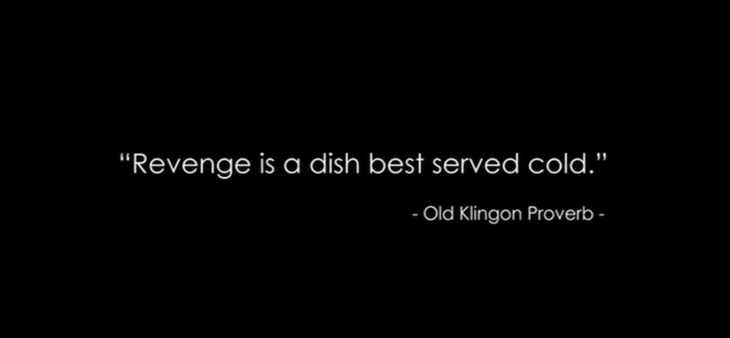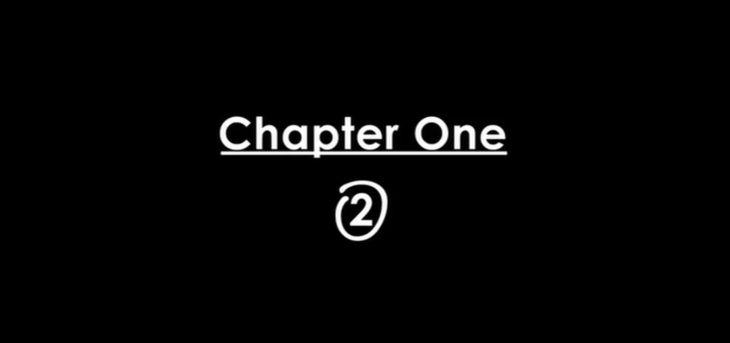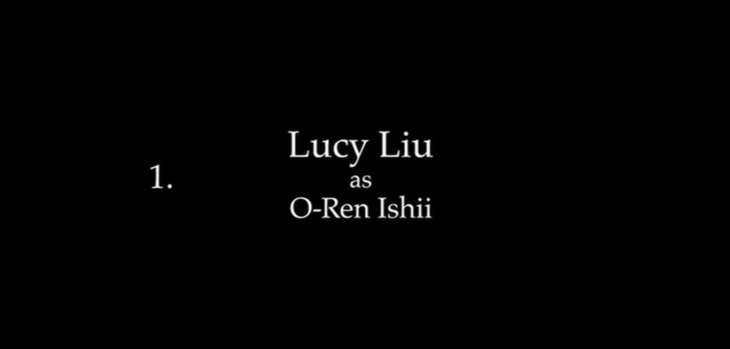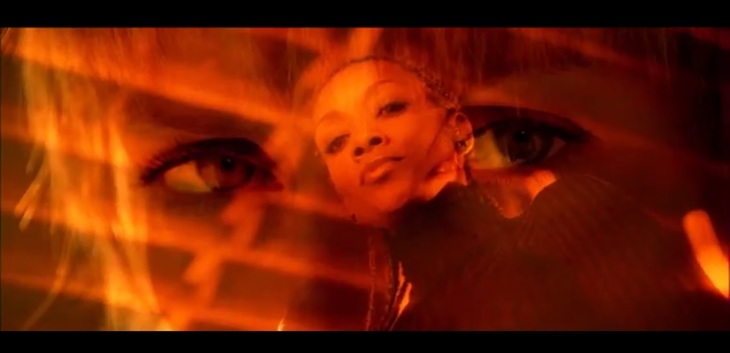Wikipedia:
“Kill Bill is an American two-part martial arts film written and directed by Quentin Tarantino. It was originally scheduled for a single theatrical release, but with a running time of over four hours, it was separated into two films: Kill Bill: Volume 1, released in late 2003, and Kill Bill: Volume 2, released in early 2004. A third installment was planned for the year 2014, but in a 2012 interview from Tarantino, concerning Kill Bill: Volume 3, he remarked, “We’ll see, probably not though.” In 2015, however, Tarantino said he and Uma Thurman are considering it.”
The first thing we see, at the start of the film, is the phrased “Revenge is a dish best served cold”, which sets the mood of the film. The audience automatically assumes that they are going to see some kind of action between 2 or more people who have some kind of reason to be against each other. The viewers will assume, by the use of the word ‘revenge’, that one person or group of people have already acted against the opposition and that the film will revolve around them trying to get back at the person/ people who have done something to them.

Kill Bill is a non-linear film, which means that Tarantino can play around with the order of the events rather than them happening in chronological order. This also helps to let the viewers to understand and work out parts of the story as they are happening, this means that as the viewers are able to see more of the backstory, it allows them to be more sympathetic towards certain characters, and understand the relationship between those in the film, which allows the audience to have more of a connection with the characters; involving the viewers in this way means that people get more into the film. This is typical of Tarantino’s style, and gives him the individual look and edge to his film that others do not achieve, but using a non-linear timeline does mean that it is unrealistic. The film is ordered by chapters, and the audience are told when one chapter ends and the other begins by title cards.

The soundtrack to Kill Bill, and many other Tarantino films, is very upbeat and catchy. This often contradicts the scenes that are being shown on the screen, which may be quite brutal or gruesome. This contrast of happiness and violence creates an intriguing and individual style of film, as the majority of films in this genre will use cultural music and music to help build the tension.
There is very intrusive editing on screen at times during the film, for example, as some points in the film “Chapter” titles will come onto screen and introduce scenes, characters are introduced in a similar way at the beginning of the film. This helps to keep the audience’s attention, with a slightly more comic book style, as they will assume that whatever is being shown on the screen will be important to the plot of the film. Using wording not only keeps the audience interested but also helps them to keep up and makes sure they understand, as the film in non-linear and sometimes confusing/ hard to understand. This use of wording also reflects the genre of the film, as many martial arts media are either in cartoon film, or there are many books and magazines in this genre, so this relates back to that. Another aspect of obvious editing would be the use of censorship, in the form of bleeping out her name, as this breaks the fourth wall of the film being a story. It’s a very unique technique, which adds mystery and curiosity, as the audience will wonder why her name is being kept from them; this acts as motivation for them to watch on, as they want to know what her name is and why her name was bleeped.

The film combines a lot of dynamic camera work with unexpected or unconventional camera angles, which means that the real aspects of the film are once again ‘ruined’ for the viewers. This is often combined with obvious editing, such as the scene where there is a close-up zoom on the protagonists eyes, then the colour of the screen changes to an orange filter and the shot is overlapped with other shots from another time, as if it is a flashback happening in her head, that we can see through her eyes. This is also shown with a split screen, showing two things that are happening at the same time, leading up to an event in which we assume the two screens will meet.

